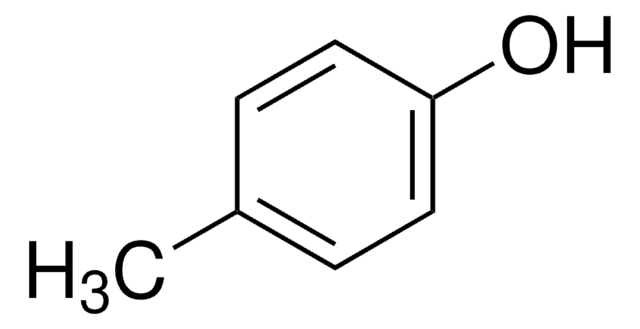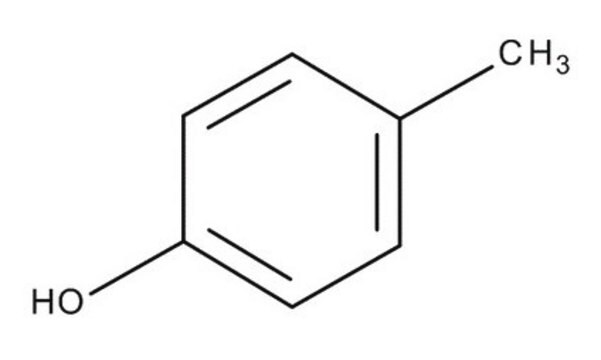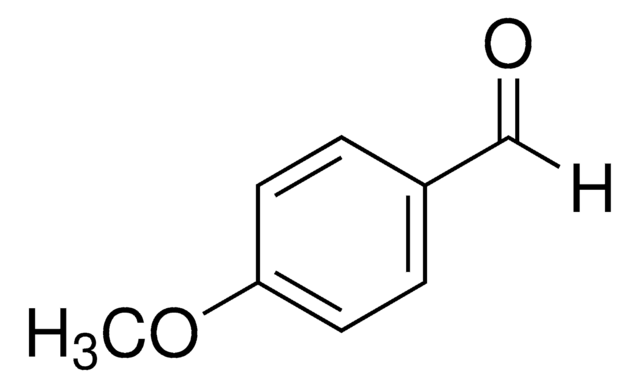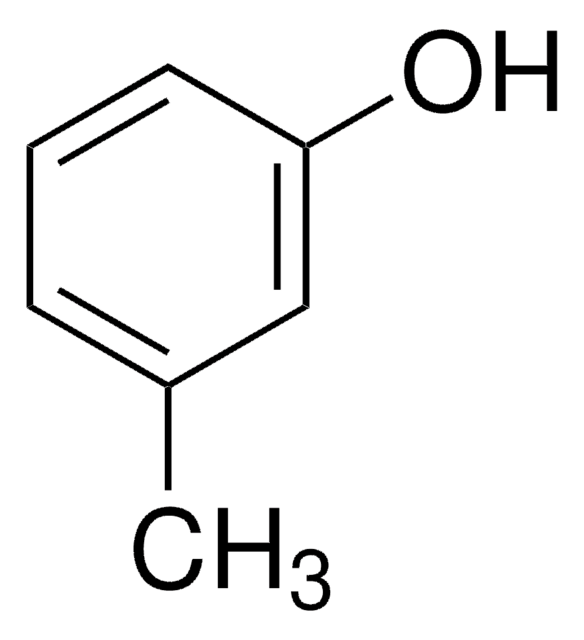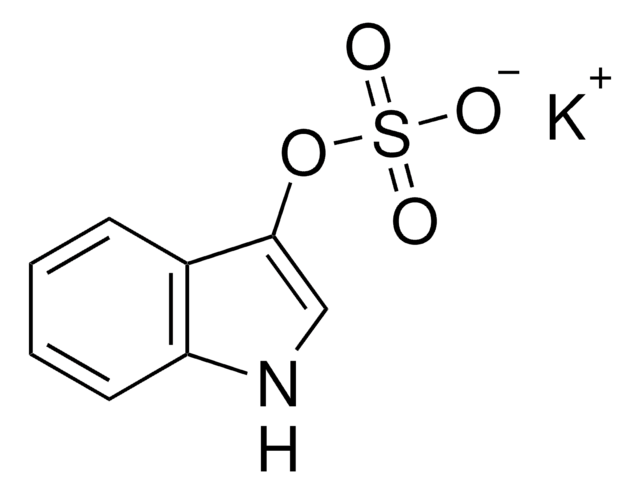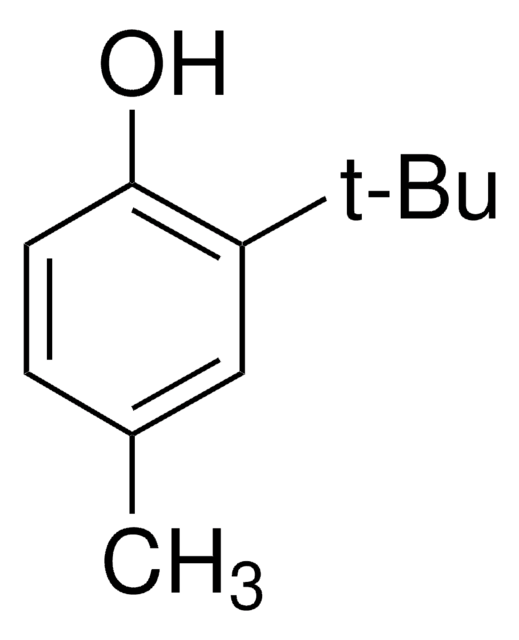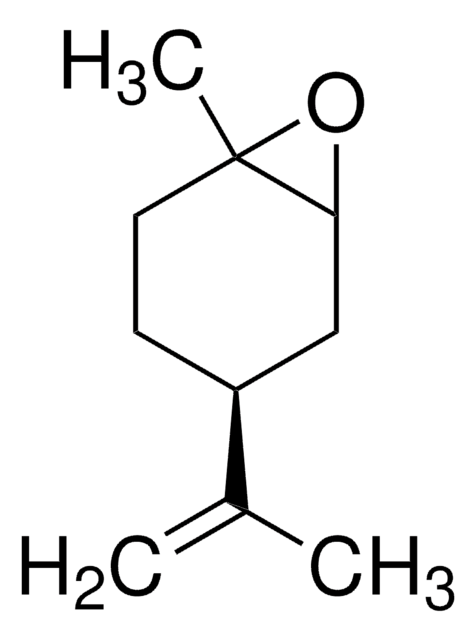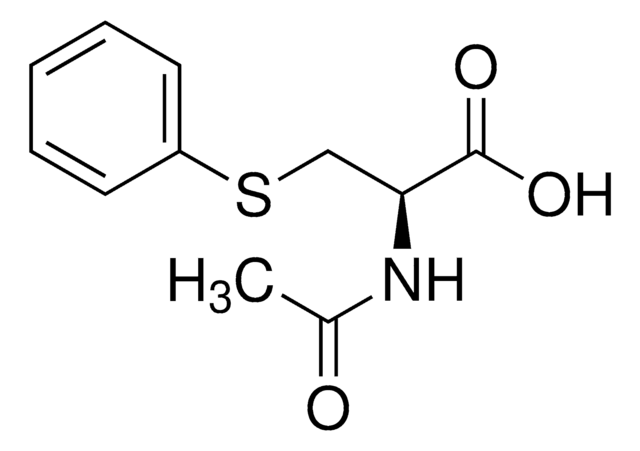C85751
p-Crésol
99%
Synonyme(s) :
4-méthylphénol
About This Item
Produits recommandés
Densité de vapeur
3.72 (vs air)
Pression de vapeur
1 mmHg ( 20 °C)
Essai
99%
Forme
(Liquid, Solid, or Crystalline Solid)
Température d'inflammation spontanée
1038 °F
Limite d'explosivité
1 %
1.1 %, 150 °F
pb
202 °C (lit.)
Pf
32-34 °C (lit.)
Densité
1.034 g/mL at 25 °C (lit.)
Chaîne SMILES
Cc1ccc(O)cc1
InChI
1S/C7H8O/c1-6-2-4-7(8)5-3-6/h2-5,8H,1H3
Clé InChI
IWDCLRJOBJJRNH-UHFFFAOYSA-N
Vous recherchez des produits similaires ? Visite Guide de comparaison des produits
Description générale
Application
- Detoxification of sewage sludge by natural attenuation and implications for its use as a fertilizer on agricultural soils.: This article discusses the role of p-Cresol in the detoxification processes of sewage sludge, considering its implications for safe agricultural use, addressing environmental and health concerns (Mazzeo DEC et al., 2016).
- Characterization of livestock odors using steel plates, solid-phase microextraction, and multidimensional gas chromatography-mass spectrometry-olfactometry.: This research characterizes the complex odors of livestock environments, highlighting the role of p-Cresol in odor profiles, which could help improve management practices and mitigate odor emissions (Bulliner EA et al., 2006).
Mention d'avertissement
Danger
Mentions de danger
Classification des risques
Acute Tox. 3 Dermal - Acute Tox. 3 Oral - Aquatic Chronic 3 - Eye Dam. 1 - Skin Corr. 1B
Code de la classe de stockage
6.1A - Combustible acute toxic Cat. 1 and 2 / very toxic hazardous materials
Classe de danger pour l'eau (WGK)
WGK 2
Point d'éclair (°F)
186.8 °F - closed cup
Point d'éclair (°C)
86 °C - closed cup
Faites votre choix parmi les versions les plus récentes :
Déjà en possession de ce produit ?
Retrouvez la documentation relative aux produits que vous avez récemment achetés dans la Bibliothèque de documents.
Les clients ont également consulté
Notre équipe de scientifiques dispose d'une expérience dans tous les secteurs de la recherche, notamment en sciences de la vie, science des matériaux, synthèse chimique, chromatographie, analyse et dans de nombreux autres domaines..
Contacter notre Service technique